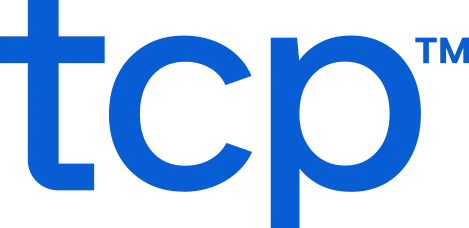It’s Friday night and you’re the GM in a packed restaurant.
The dining room is full, the bar is three deep, and there’s a 40-minute wait at the door. Business is booming, but two servers have called out, a dishwasher’s car broke down, and you’re trying to fill gaps while greeting guests and checking on a catering order leaving in 20 minutes.
The kitchen is barely keeping up and the host stand is overwhelmed. For food and beverage leaders, nights like this are the norm and they all stem from one core issue: scheduling.
Staffing defines the guest experience, the team’s stress level, and potential profitability in food and beverage. When employee schedules are inconsistent or reactive, coverage gaps, compliance risks, and burnout build with every shift. But when they’re predictable and fair, teams thrive, guests stay happy, and labor costs stay in line.
Want to transition from reactive scheduling and last-minute fixes to a reliable, balanced process? You’re in the right place. We’ll show you how to deliver steady coverage, build confidence in compliance, and maintain calmer shifts, regardless of how busy your operation becomes.
Why employee scheduling in food and beverage matters across every role
Scheduling in food and beverage operations impacts everyone — from ownership to the line cook.
- Operators and general managers use it to balance labor against unpredictable demand.
- Front- and back-of-house leaders need it to maintain service flow and fairness.
- HR and payroll teams rely on it to ensure accurate records and compliance.
- Multi-location directors depend on it to maintain brand standards across properties.
Employee scheduling can make or break the job for those who live in the rush: owners, GMs, FOH and BOH leaders, HR/payroll coordinators, and multi-site directors. You need the right people in the right places at the right time.
When you do, compliance becomes cleaner, shifts run more smoothly, and labor tracks steadily against sales.
The everyday struggles of employee scheduling in food and beverage
It’s easy to know when scheduling is broken, but knowing how to fix it is a different story.
An experienced operator knows the schedule is never set in stone — someone calls out, demand shifts, or a new compliance rule comes into play. A café manager trying to juggle part-time baristas, a fine dining restaurant working around long prep hours, or a catering team staffing unpredictable events all deal with different daily pressures.
Yet scheduling is the common thread that keeps it all moving: coverage, compliance, labor costs, and team morale. When it falters, the impact spreads fast.
The table below outlines the most common friction points across roles in food and beverage operations, showing how scheduling challenges show up day to day, and what happens when they’re left unchecked.
| Role | Scheduling tasks | Result of Poor Scheduling |
| Operators & Owners | Balancing cross-site coverage and labor costs amid unpredictable demand | Excessive overtime, coverage gaps, high turnover |
| Front-of-House Managers | Managing daypart spikes, callouts, and fairness complaints | Uneven service fulfillment, burnt-out servers, missed breaks and compliance risks |
| Back-of-House Leaders | Covering line, prep, and expo while meeting skill and safety needs | Station gaps, late tickets, food-safety risks |
| HR/Payroll | Auditing schedules for compliance across minors, rest rules, and state laws | Penalties, recordkeeping headaches, risk exposure through break law violations |
| Multi-Location/Franchise | Balancing local flexibility with consistent labor standards | Inconsistent service, reporting gaps, margin drift |
| Event/Catering Support | Handling off-site events, travel time, and variable headcounts | Missed headcount, day-of chaos impacting service quality |
Realities behind the rush
In food and bev, staffing needs change constantly.
Managers must coordinate coverage by meal period and event, adjust on the fly for callouts, and balance fairness for tipped and hourly workers. Add in seasonal patios, holidays, and pop-ups, and it’s easy to see why so many teams operate in “survival mode.”
When POS, payroll management, and scheduling systems aren’t connected, problems compound, which means more work for everyone involved.
How to improve scheduling in food and beverage
Until you can replace reactive fixes with a proactive structure, employee scheduling in food and beverage won’t improve.
Each role in the food and beverage industry faces unique pressures, but that doesn’t mean those pressures can’t become predictable and manageable patterns. We’ve built out guidance centered on the realities your teams face every day, with the goal of helping you turn unpredictable schedules into calm, well-covered shifts.
Each move below addresses a common scheduling pain point, along with the difference you should notice when it’s working. Start small, prove it, and layer on from there.
Align labor to demand instantly
Reactive scheduling is one of the biggest labor drains in the food and beverage industry. Set labor standards by daypart and station, then tie each schedule to forecasted sales and traffic. Review any variance midweek, before overtime sneaks up or coverage falls short.
Getting proactive in scheduling means using centralized templates and approving schedules before publishing so every site aligns to one plan. When staffing mirrors demand, guests feel the consistency and labor costs are more predictable.
Top scheduling use cases: forecast-tied templates; scheduled vs. actual labor views; pre-publish overtime checks.
Balance fairness and flexibility for FOH teams
Front-of-house scheduling should give staff visibility and more choices without creating chaos for managers. Collect availability and preferences once, then let the system apply them automatically each week.
When it’s needed, enable self-service swaps for shift schedules and open-shift pickups with approval workflows built in. Predictable schedules mean fewer no-shows and smoother guest experiences, while rotating sections and weekend assignments evenly helps avoid burnout and builds trust.
Top scheduling use cases: availability and preference capture; self-service swaps; balanced section templates.
Keep the kitchen covered
Line coverage is your foundation, so it can’t be guesswork. Tag staff by skill, certification, and station, so every shift automatically includes qualified cooks in the right roles.
Build smart templates for prep, line, and expo stations with minimum coverage rules. Add guardrails for clopenings and overtime before the schedule goes live. The right people in the right stations keep service smooth, food safe, and your team fresh.
Top scheduling use cases: skill and role tagging; minimum coverage rules; clopenings and overtime alerts.
Automate compliance
Compliance shouldn’t depend on manual checks or spreadsheets. Bake meal and rest breaks directly into your scheduling templates, as well caps that comply with employment rules for minors.
Create edit histories and consent logs tied to every change so approvals are transparent and traceable. Configurable rule sets by state or unions help managers stay compliant without memorizing policy. Compliance becomes built-in, not bolted on as a last-ditch effort.
Top scheduling use cases: right-to-rest checks; automated break planning; state-specific rule sets.
Standardize scheduling across locations without losing flexibility
Uniformity scales, but rigidity doesn’t. Use shared scheduling templates across all properties, then allow local managers to adjust for real-world needs like patio season or special events.
Dashboards and routine audits surface labor-to-sales variance, coverage consistency, and compliance gaps, keeping operators on the same page across sites. This central oversight upholds scheduling standards while giving local teams room to adapt.
Top scheduling use cases: corporate templates with local overrides; multi-location dashboards; scheduled audits.
Plan and staff events without the scramble
Events, banquets, and off-site catering can unravel quickly without clear scheduling visibility. Build event-specific schedules that include load-in, service, teardown, and travel time.
Assign roles and headcounts directly to event templates and send mobile confirmations so staff know exactly when and where to show up. When coverage and timing are locked in advance, event days feel more controlled than chaotic.
Top scheduling use cases: event-based scheduling; travel buffers; mobile shift confirmations.
Best practices for employee scheduling in food and beverage
In food and bev, where every shift is a live performance and timing is everything, the right scheduling foundation can be the difference between a chaotic rush (which your guests feel) and a smooth service (which keeps them coming back).
Start by treating the schedule as both an operational plan and a culture statement.
A clear, predictable schedule shows respect for your team’s time. Let data shape the schedule, not control it. A data-informed schedule keeps your labor costs in check without locking you into rigid staffing rules. That balance keeps costs down while still supporting fairness and work-life balance — two things that strengthen employee retention.
Here are ten scheduling best practices to help your team reach that balance:
- Build labor standards by daypart and station – coverage minimums and skill tags, and lock critical roles before publishing.
- Use forecast-driven templates – to sales or traffic data, then review variance before approving.
- Enforce right-to-rest and break planning – meal and rest windows into the schedule grid. Flag clopenings and late breaks before publish.
- Capture availability and preferences once, then default to them – tools. Route exceptions with reason codes.
- Make swaps, drops, and open shifts easy – maintain consent logs.
- Support minor compliance by design – Apply age-based curfews and hour caps before schedules go live.
- Treat overtime as strategic, not situational – Forecast overtime risk, cap hours by role, and require approvals for exceptions.
- Standardize multi-location scheduling – Utilize corporate templates with local overrides and schedule regular audits.
- Have a strategy for events and off-site work – Add buffers and travel details. Publish confirmations and staff from open-shift pools.
- Close the loop daily – Compare planned versus actuals, capture attestations, and roll insights into next week’s schedule.
Choose a scheduling strategy that scales with you
There’s no single right way to schedule in food and beverage.
The best strategy depends on your operation’s size, pace, and staffing model. A café with a dozen employees will schedule differently from a multi-unit franchise with rotating teams and seasonal demands. The key is to choose a structure that removes blockers in your workflow, not add to it.
Most importantly, a thoughtful scheduling approach grows with your operation. What starts as a basic digital schedule for one location can evolve into a fully integrated system that connects forecasting, payroll management, and compliance.
Independent or small teams
Smaller operations should focus on moving away from spreadsheets toward simple, rules-based scheduling templates. Prioritize solutions that make it easy to drag and drop shifts, track availability, manage swaps, and catch compliance issues automatically.
Even a modest system saves hours each week and ensures you’re not relying on last-minute fixes.
Multi-site or growing operations
As your business expands your scheduling complexities grow. Whether that growth creates new issues or solves them is up to you, and striking while the iron’s hot by researching your scheduling options in advance can help you grow to success.
Standardize templates across locations, connect scheduling to sales forecasts, and add approval workflows to manage overtime or clopenings. Audit trails make accountability easier and help uncover where labor spend drifts from plan.
High-volume or seasonal enterprises
Larger or seasonal operations should focus on scalability, handling complex scheduling needs without losing control.
Corporate and local templates, compliance engines for right-to-rest and minor rules, and event scheduling modules create governance without rigidity. Dashboards with multi-site data help leaders make real-time while maintaining service quality across every location.
The measurable impact of better scheduling in food and beverage
Improving employee scheduling in food and beverage has nearly immediate and measurable ROI:
- Fewer callouts and last-minute scrambles mean steadier guest experiences
- Lower overtime and premium pay events protect profit margins
- Predictable, fair schedules reduce burnout and boost morale
- Labor aligns more closely with sales, improving operational efficiency
- Managers spend less time fixing problems and more time developing people
Beyond metrics, the emotional ROI matters too.
Teams feel supported instead of stretched. Managers emerge from spreadsheet nightmares to actually focus on delivering great service. Guests experience smoother, friendlier service. And over time, that consistency builds loyalty, reputation, and revenue.
Where predictable scheduling meets exceptional service
From restaurants and cafés to catering operations and beyond, food and beverage teams know the pain of last-minute schedule chaos. But it doesn’t have to be the norm.
Predictable scheduling is the stress equalizer.
Instability is fixed when you place the right people in the right roles automatically. Fairness and flexibility in every schedule keeps your teams happy. Compliance risks are flagged before they become problems, keeping your labor plan aligned with sales no matter how unpredictable the day gets.
Steadier coverage, calmer shifts, and consistency that scales don’t have to be a fantasy.
If you’re ready, take a deeper dive into researching dedicated scheduling software built for food and beverage. Then find the one that fits how your team really runs service. Instead of just filling shifts and fighting each day as it comes, you can finally create a foundation for consistency — better service, happier staff, and stronger margins.
TCP Software’s employee scheduling and time and attendance solutions have the flexibility and scalability to suit your business and your employees, now and as you grow.
From TimeClock Plus, which automates even the most complex payroll calculations and leave management requests, to Humanity Schedule for dynamic employee scheduling that saves you time and money, we have everything you need to meet your organization’s needs, no matter how unique. Plus, with Aladtec, we offer 24/7 public safety scheduling solutions for your hometown heroes.
Ready to learn how TCP Software takes the pain out of employee scheduling and time tracking? Speak with an expert today.
What to read next
Explore all resources


